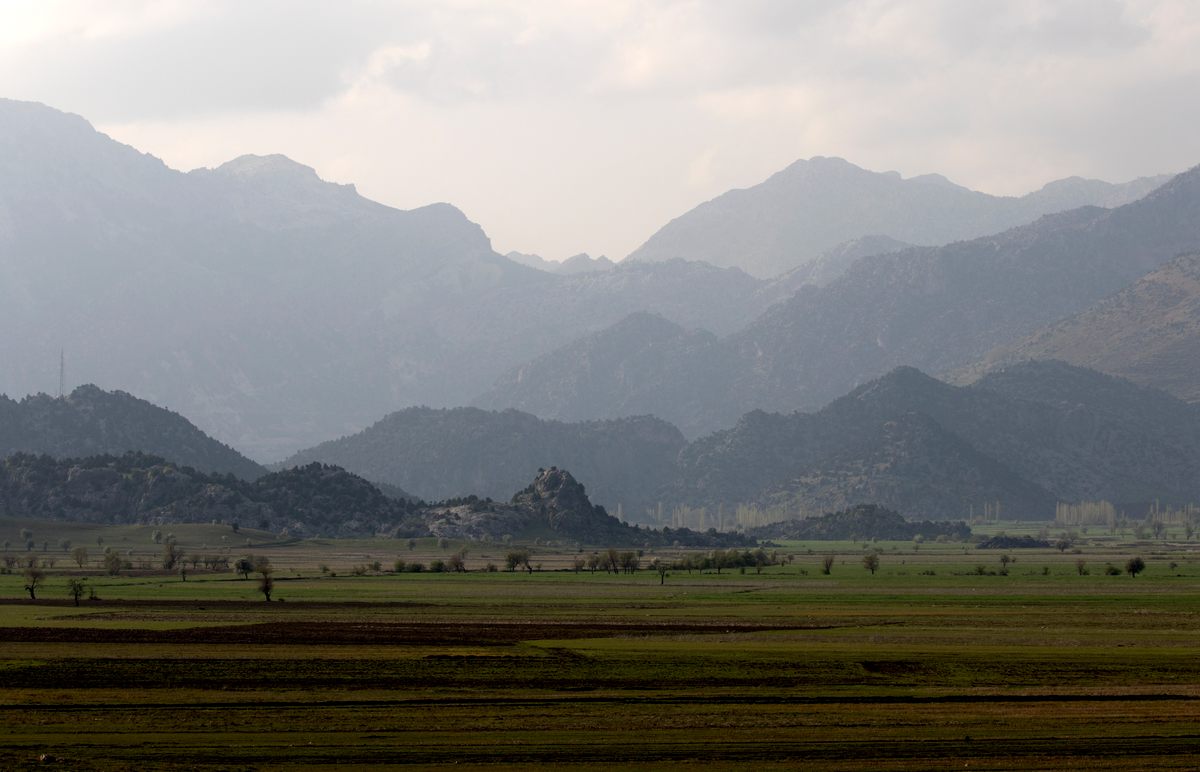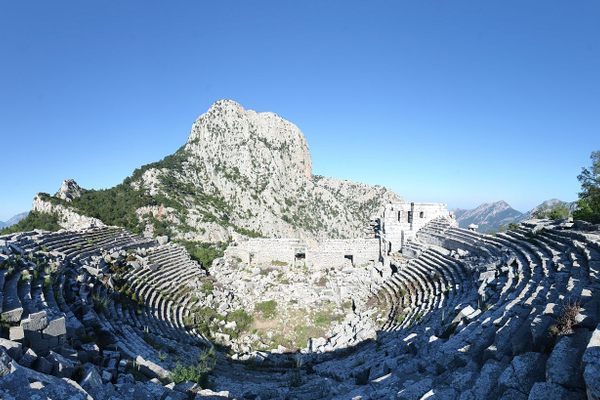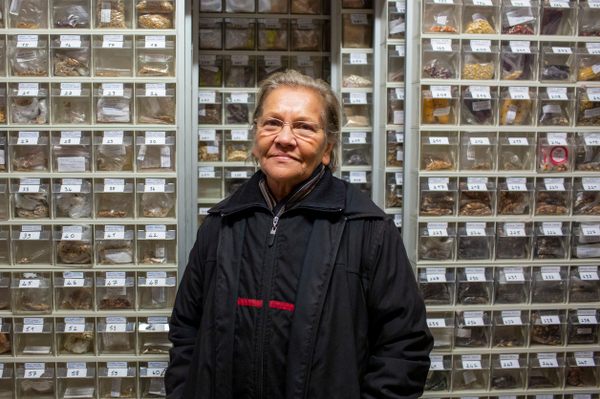
In Turkey’s Taurus Mountains, Farms Look Like Modern Art
Despite challenging terrain, these narrow plots produce tons of grain, nuts, fruits, and flowers each year.
Rising up just inland from Turkey’s southern coast, the Taurus Mountains are as beautiful as they are rugged. Even Alexander the Great found the range formidable: He famously failed to conquer Termessos, a city nestled in the range at more than 3,000 feet above sea level. Researchers have designated much of the region as “marginal” landscape for human habitation and productivity. So it might be surprising to learn the mountainous area is one of the country’s agricultural strongholds.
Small, intergenerational farms, typically less than 12 acres, make the most use of space in the flatter highland valleys with long, narrow plots that, viewed from space, look more like modern art than food production. Here, in addition to subsistence farming, locals grow a range of crops for export, from organic roses destined for the world’s great perfume houses to hazelnuts and apricots that you might find on your local supermarket shelf. The region also produces tons of apples, lentils, chickpeas, and wheat each year.
Farmers generally rely on rain-based irrigation methods, which researchers warn could become an issue in the future. As climate change shifts precipitation patterns, many models suggest the Taurus Mountains in general may become drier and more prone to drought. Already, many previously farmed areas have been left fallow because some crops, particularly wheat, are becoming too expensive to grow there.

To protect the local economy in the face of climate change, researchers are investigating a range of potential solutions, such as converting farms to almond orchards, as outlined in a paper published in Environmental Earth Sciences in May. The cost of turning the narrow plots of land into orchards, and of maintaining the water-hungry trees, may make the idea impractical, however. As farmers and scientists search for a way forward, the future of the region’s agriculture—and what it will look like from far overhead—remains a question mark.













Follow us on Twitter to get the latest on the world's hidden wonders.
Like us on Facebook to get the latest on the world's hidden wonders.
Follow us on Twitter Like us on Facebook